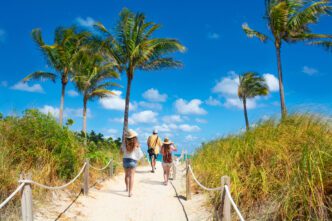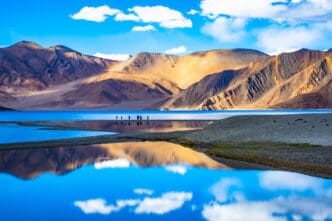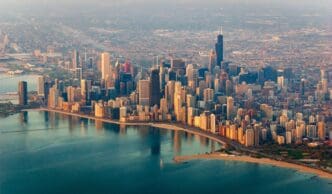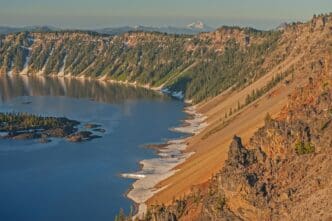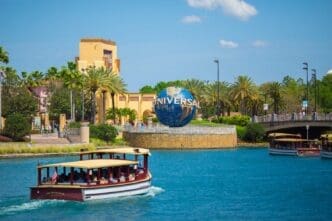For travelers seeking the ultimate adventure, the Australian East Coast road trip is a legendary rite of passage, offering an unparalleled journey through the country’s most iconic landscapes. This classic route, typically spanning from the bustling metropolis of Sydney to the tropical gateway of Cairns, is a pilgrimage for backpackers, families, and explorers of all kinds. Best undertaken during the shoulder seasons of spring (September-November) or autumn (March-May) to avoid extreme weather and peak crowds, the drive covers over 2,600 kilometers of stunning coastline. It’s a trip that encapsulates why Australia is a top travel destination, seamlessly blending world-famous surf beaches, ancient rainforests, vibrant cities, and the breathtaking wonder of the Great Barrier Reef into one unforgettable expedition.
Planning Your Epic Journey
A successful road trip is built on a foundation of smart planning. Before you even think about turning the key in the ignition, dedicating time to the logistics will ensure your journey is smooth, safe, and tailored to your travel style.
Best Time to Go
While the East Coast can be driven year-round, timing is crucial for an optimal experience. The shoulder seasons of spring and autumn offer a perfect balance, with pleasant temperatures along the entire coast, lower rainfall in the tropical north, and fewer tourists than the peak summer months.
Summer (December-February) brings heat, humidity, and peak holiday crowds to the southern half, while also marking the wet and stinger season in Tropical North Queensland. Winter (June-August) can be cool and rainy in New South Wales and southern Queensland, but it is often the ideal time to visit the far north, with dry, sunny days and minimal humidity.
Choosing Your Vehicle
Your choice of transport will define your trip. Renting a standard car and staying in hostels or motels offers comfort and ease, but a campervan provides the ultimate freedom. Waking up to a beachfront sunrise from your own mobile home is an experience that is hard to beat.
Campervans range from basic two-person sleepers to larger, fully-equipped motorhomes. Consider factors like fuel efficiency, ease of driving, and your budget. Companies like Jucy, Britz, and Apollo are popular choices, but be sure to book well in advance, especially during peak seasons.
How Long Do You Need?
The most common question is, “How much time do I need?” The honest answer is always “more than you think.” A whirlwind trip can be done in two weeks, but this will feel rushed and involve long driving days.
A period of four to six weeks is a comfortable timeframe, allowing for several days at major stops and the flexibility for spontaneous detours. If you have two months or more, you can truly immerse yourself, exploring smaller towns and national parks that many travelers speed past.
Budgeting for the Coast
Australia can be an expensive country, but an East Coast road trip is manageable with a good budget. Your main expenses will be fuel, accommodation, food, and activities. Fuel is a significant cost, so factor this in when choosing your vehicle.
To save money, utilize free or low-cost campsites, cook most of your meals in your campervan or hostel kitchen, and look for package deals on major tours like trips to the Whitsundays or the Great Barrier Reef. A reasonable daily budget for a backpacker could be around $80-$100 AUD, while those seeking more comfort might budget $150-$200+ AUD per day.
The Classic Route: Sydney to Cairns
This itinerary follows the most popular northbound route, but it can easily be reversed. Each leg offers a distinct flavor of Australian life and landscape, making the journey a constantly evolving adventure.
Leg 1: Sydney and the Central Coast
Your journey begins in Sydney, Australia’s dazzling harbor city. Dedicate at least three days to exploring its icons: the Sydney Opera House, the Harbour Bridge (which you can climb for spectacular views), and the famous sands of Bondi Beach. A ferry ride to Manly offers a stunning perspective of the harbor.
Heading north, the urban sprawl gives way to the laid-back Central Coast. A worthwhile detour is the Hunter Valley, one of Australia’s premier wine regions. Further up, Port Stephens is a must-visit for its vast sand dunes (perfect for sandboarding) and its resident population of bottlenose dolphins.
Leg 2: The Legendary Pacific Coast (Byron Bay & Gold Coast)
This stretch of coastline in northern New South Wales is legendary. Stop in Coffs Harbour to see the iconic Big Banana and enjoy its family-friendly beaches. The true highlight, however, is Byron Bay, the bohemian heart of the East Coast.
In Byron, walk to the Cape Byron Lighthouse for sunrise, take a surf lesson at The Pass, and soak in the town’s eclectic, alternative vibe. Just an hour north, you’ll cross into Queensland and hit the Gold Coast. Here, the laid-back surf culture of Byron is replaced by the glitz and glamour of Surfers Paradise, with its towering skyscrapers, bustling nightlife, and world-class theme parks.
Leg 3: Queensland’s Sunshine Coast and K’gari (Fraser Island)
After a potential stop in the state capital of Brisbane, continue north to the Sunshine Coast. This region offers a more relaxed alternative to the Gold Coast. Its crown jewel is Noosa, a chic town known for its stunning national park, where coastal walking tracks offer koala sightings and breathtaking ocean views.
From here, the journey leads to Hervey Bay, the primary departure point for K’gari (formerly Fraser Island). As the world’s largest sand island, K’gari is an essential 4WD adventure. Join a multi-day tour to drive along 75 Mile Beach, swim in the pristine freshwater of Lake McKenzie, and float down the tranquil Eli Creek.
Leg 4: The Capricorn Coast to The Whitsundays
This section involves longer driving days but rewards travelers with access to the southern Great Barrier Reef. The town of Airlie Beach is your destination, a vibrant backpacker hub and the gateway to the Whitsunday Islands.
The Whitsundays are a collection of 74 idyllic islands. The best way to experience them is on a two or three-day sailing trip. These tours typically include snorkeling or diving on fringing coral reefs and a visit to the world-famous Whitehaven Beach, where the brilliant white silica sand meets swirling turquoise water.
Leg 5: Tropical North Queensland (Cairns)
The final leg takes you deep into the tropics. A stop at Magnetic Island, just off the coast of Townsville, is highly recommended for its abundant wildlife, including a large, easily spotted koala population. Further north, Mission Beach offers the unique thrill of skydiving with views of the reef and rainforest.
Your epic road trip culminates in Cairns, the adventure capital of the north. This is your base for exploring two UNESCO World Heritage sites that sit side-by-side: the Great Barrier Reef and the Daintree Rainforest. Take a boat tour to snorkel or dive the outer reef and spend a day exploring the ancient ecosystem of the Daintree, the oldest tropical rainforest on Earth.
Essential Travel Tips for the East Coast
A little local knowledge goes a long way in ensuring your trip is as safe as it is memorable. Keep these practical tips in mind as you travel.
Driving in Australia
Remember that Australians drive on the left side of the road. Distances between towns can be vast, so always ensure you have enough fuel. Be extremely cautious when driving at dawn and dusk, as this is when kangaroos and other wildlife are most active on the roads.
Staying Connected
While major towns and cities have excellent mobile coverage, service can become patchy or non-existent in rural areas and national parks. Telstra generally offers the most extensive network coverage, which is worth considering if you need to stay connected.
Safety and Wildlife
The Australian sun is harsh. Always follow the “slip, slop, slap” mantra: slip on a shirt, slop on sunscreen, and slap on a hat. When swimming at beaches, always stay between the red and yellow flags, which mark the safest area patrolled by surf lifesavers.
In Tropical North Queensland (roughly from Gladstone northwards), be aware of marine stingers, particularly from November to May. Wear a protective “stinger suit” when swimming or snorkeling during this period. Finally, always be “croc-wise” near rivers and estuaries in the far north by obeying all warning signs.
The Australian East Coast road trip is far more than just a drive. It is a journey through a continent’s heart, showcasing a staggering diversity of environments, cultures, and adventures. From the urban energy of Sydney to the ancient calm of the Daintree Rainforest, this is an experience that will challenge, inspire, and leave you with memories that will last a lifetime. It is, without a doubt, one of the greatest road trips on the planet.



